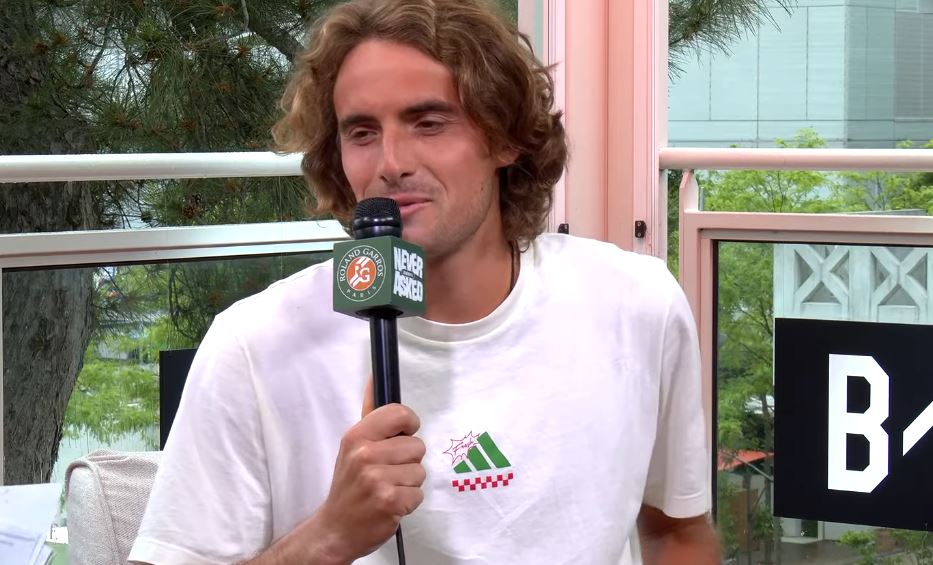With an estimated net worth of over $25 million, Stefanos Tsitsipas has transformed modern tennis, rising from the humble tennis courts of Athens to the sunny terraces of Monte Carlo. Aside from his athletic prowess, this financial leap, which he made before turning 27, is a testament to his discipline, vision, and distinct philosophical charm, which appeals to both fans and brands.
Tsitsipas created a legacy rather than merely inheriting it. His path was shaped early on by perseverance because he grew up in a household where tennis was not only a hobby but a source of income. His father found himself in a difficult financial situation while mentoring his son because he was unable to take out enough cash from banks during Greece’s financial crisis. “It was stressful for my father…tennis is expensive,” Stefanos recalled these difficulties. That frank assessment shows how far he’s come and why his current position feels especially earned.
Stefanos Tsitsipas – Bio & Financial Overview
| Category | Details |
|---|---|
| Full Name | Stefanos Tsitsipas |
| Date of Birth | August 12, 1998 |
| Birthplace | Athens, Greece |
| Nationality | Greek |
| Residence | Monte Carlo, Monaco |
| Height | 6 ft 4 in (1.93 m) |
| Turned Professional | 2016 |
| Playing Style | Right-handed, one-handed backhand |
| Career Titles | 12 Singles, 2 Doubles |
| Highest Ranking | No. 3 (August 2021) |
| Current Ranking | No. 26 (as of June 2025) |
| Total Prize Money | $34,787,309 |
| Estimated Net Worth | $25–30 million (2025) |
| Endorsement Partners | Adidas, Wilson, Red Bull, Rolex, New Balance, Rexona |
| Current Coach | Goran Ivanišević |
His career earnings of $34 million are evidence of his clutch play and consistency. However, what’s particularly intriguing is how his brand value has changed at the same time. He has made a name for himself as an ambassador of style and tenacity by collaborating with international behemoths like Red Bull, Adidas, and Rolex. His layered persona—intellectual, genuine, and sometimes humorous—is the reason for these alliances; they are not coincidental. “Whoever said’money can’t buy happiness’ obviously never paid to skip the ads on a streaming service,” he recently joked on social media. It was a clever reminder that even tennis stars deal with the everyday and a subtle nod to digital culture.
This relatability has proven to be incredibly successful from a financial standpoint. According to reports, his off-court earnings began to surpass his tournament winnings by 2025. Sponsors are investing in a way of life—a Greek Riviera style that strikes a balance between self-control and consideration—rather than just winning.
Stefanos has always been competitive on the court, particularly on clay, where his style of play works best. He is now compared to tennis greats like Roger Federer because of his famous one-handed backhand. His Greek upbringing may have influenced his preference for clay, but his accomplishments on hard and grass courts, particularly at Los Cabos and Monte Carlo, have expanded his horizons and strengthened his adaptability. Notably, he outperformed many of his peers in recent years, becoming the first player born after 1998 to earn over $30 million in his career.
Tsitsipas continues to be refreshingly flawed in spite of his achievements. He acknowledges that he has broken about “30 rackets” in frustration; this is undoubtedly an expensive but sincere emotional release. Despite their humor, these admissions highlight the pressure elite athletes endure. Particularly in high-stakes competitions, mental clarity is just as important as skill.
Additionally, his net worth is a symbol of something greater than personal achievement. Tsitsipas has sparked a grassroots movement in Greece, where basketball and football used to dominate tennis. The number of young people joining tennis clubs has increased in Athens and elsewhere. Stefanos is praised by his parents for his work ethic, poise, and humility in addition to his athletic accomplishments.
It should come as no surprise that he has fostered rivalries and friendships that are currently influencing the next phase of men’s tennis. A generational shift can be seen in his matches against Daniil Medvedev and Carlos Alcaraz, where Stefanos frequently assumes the role of a philosophical challenger rather than a brutal tyrant. He is regularly invited to international media panels and branded content partnerships outside of tennis because of his unique softer charisma.
His use of digital storytelling, especially in the form of personal vlogs and reflective tweets, has allowed him to reach younger audiences who might not have otherwise taken notice. His writing displays vulnerability in addition to triumphs. And that has turned out to be especially creative in bringing a sport that frequently seems too polished to a human level.
Tsitsipas appears to have a bright future ahead of her. Now that legendary coach Goran Ivanišević is in his camp, tactical development and mental toughness are being prioritized. Few question that his financial portfolio will continue to grow steadily, even though major titles are still elusive. Stefanos is subtly getting ready for life after center court, with interviews hinting at possible endeavors in publishing, fitness, and even wellness tourism.
That dichotomy—athlete and philosopher, millionaire and minimalist—is what appeals to both sponsors and fans. His narrative encompasses not only upward mobility but also strategic foresight and emotional nuance. In many respects, Stefanos Tsitsipas is creating a legacy—one racket, one brand, and one motivated Greek kid at a time—instead of merely pursuing trophies these days.

